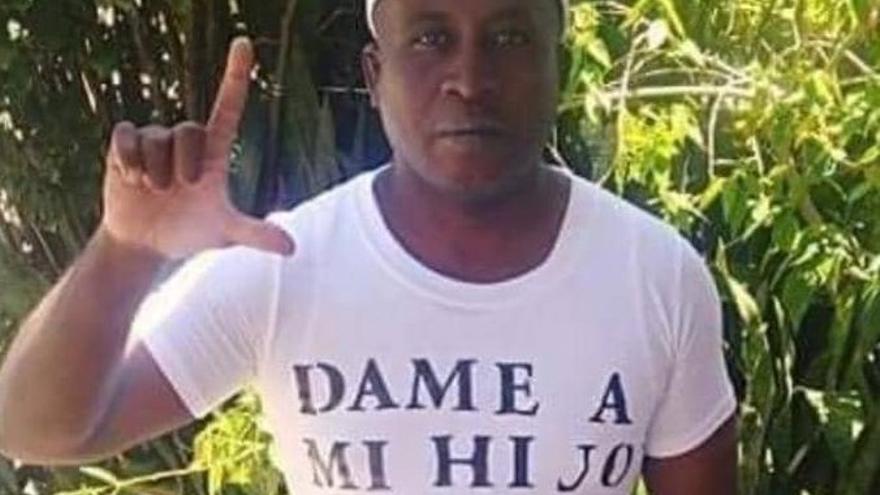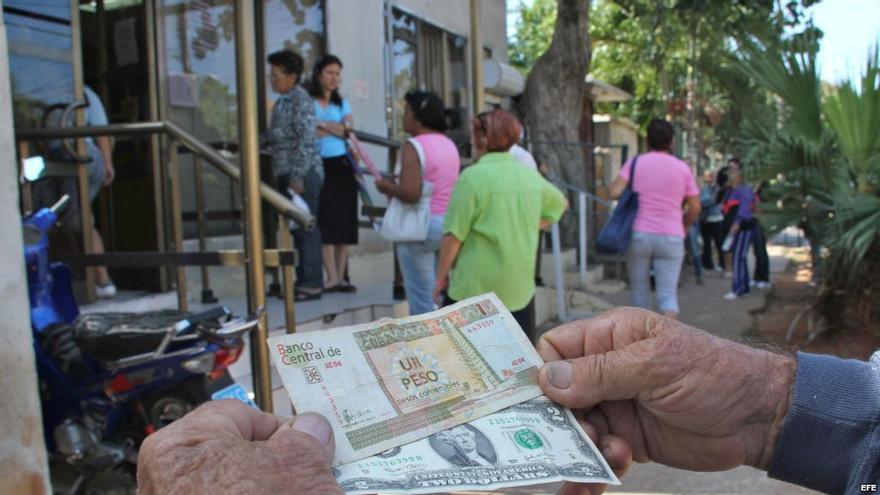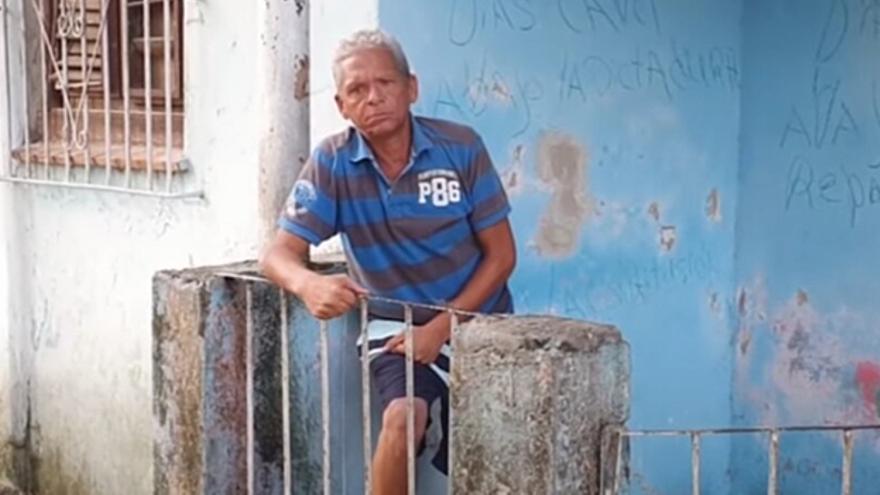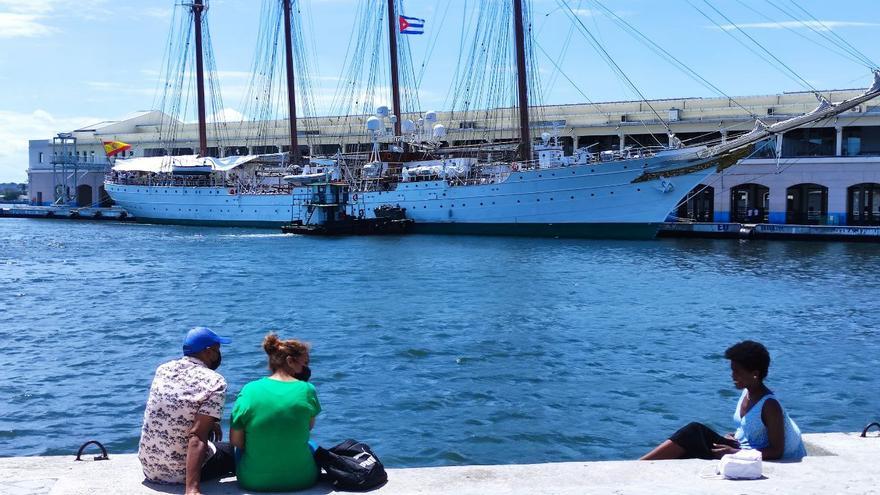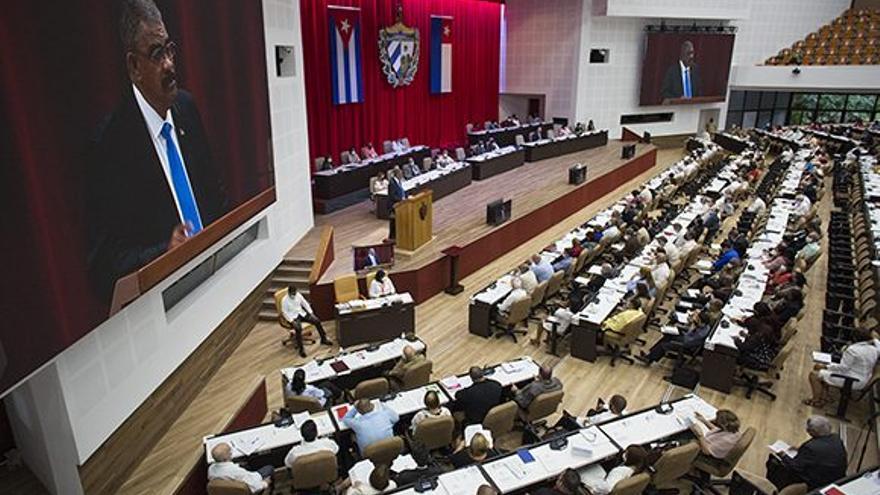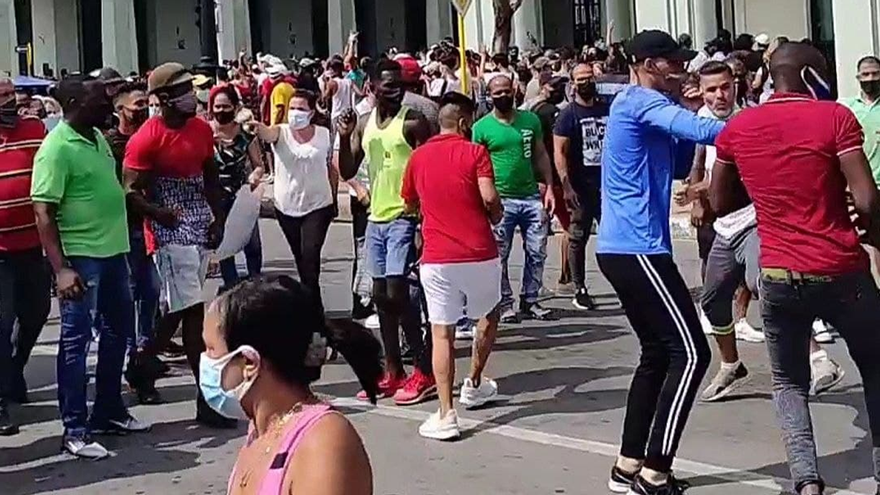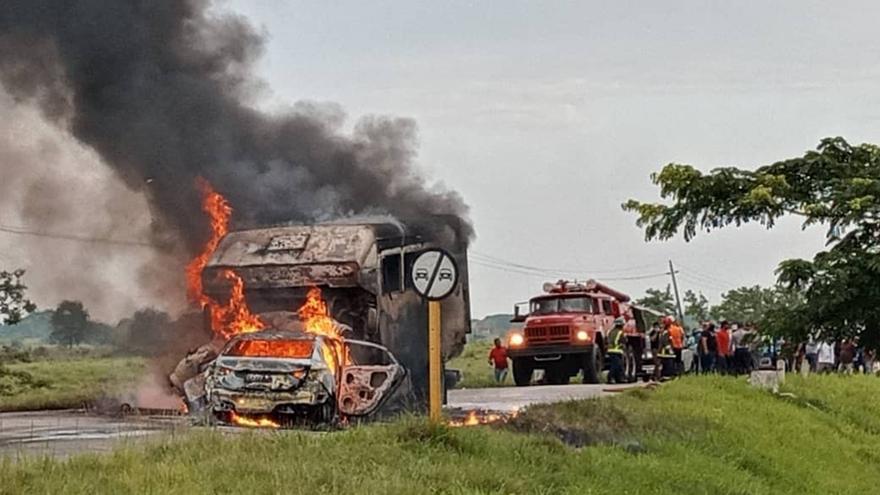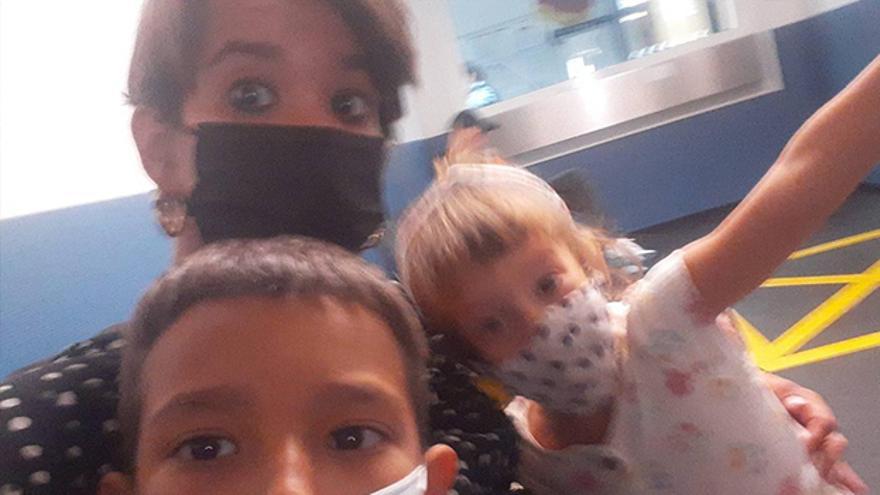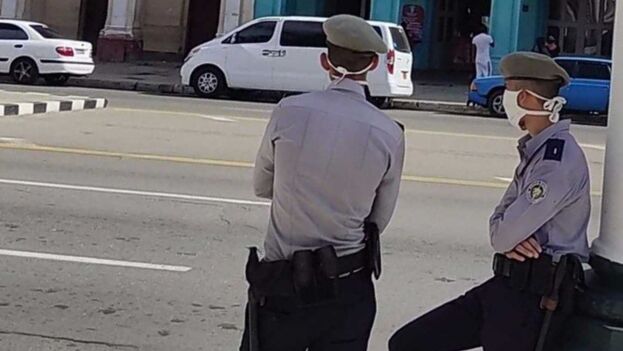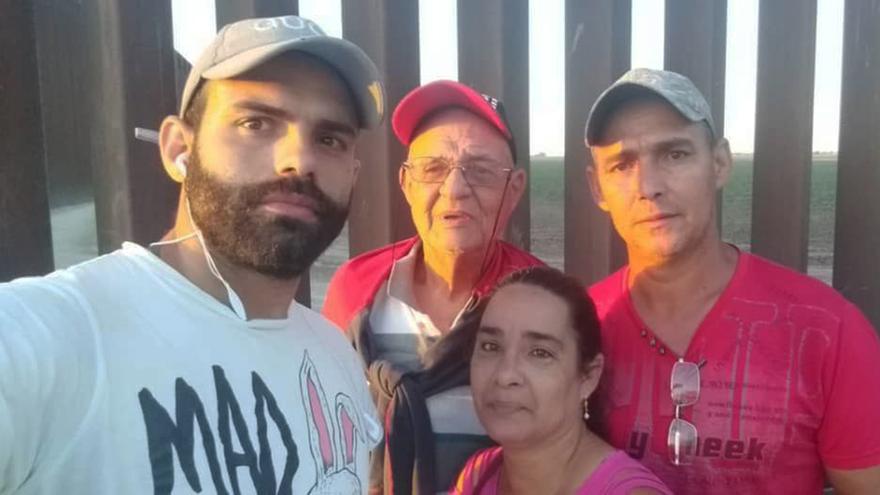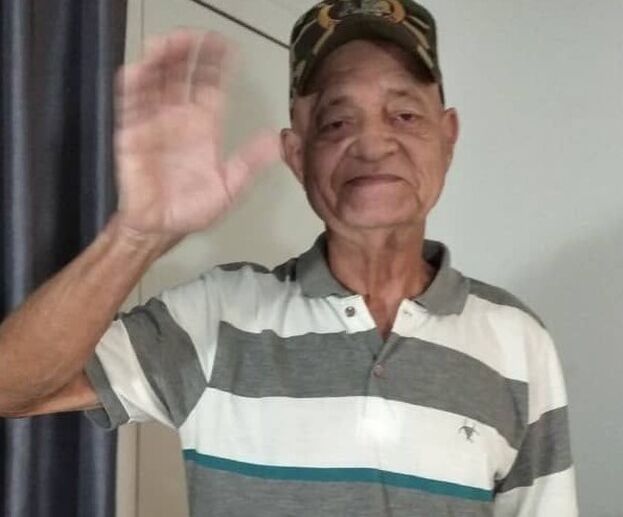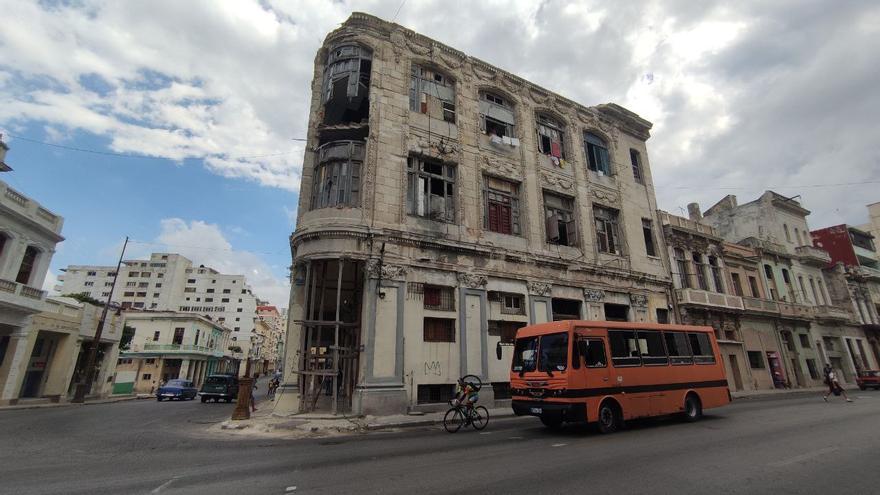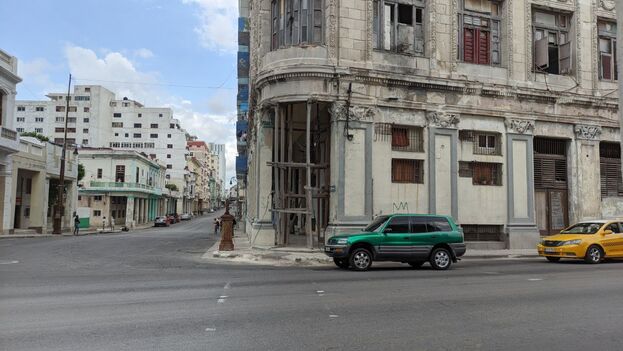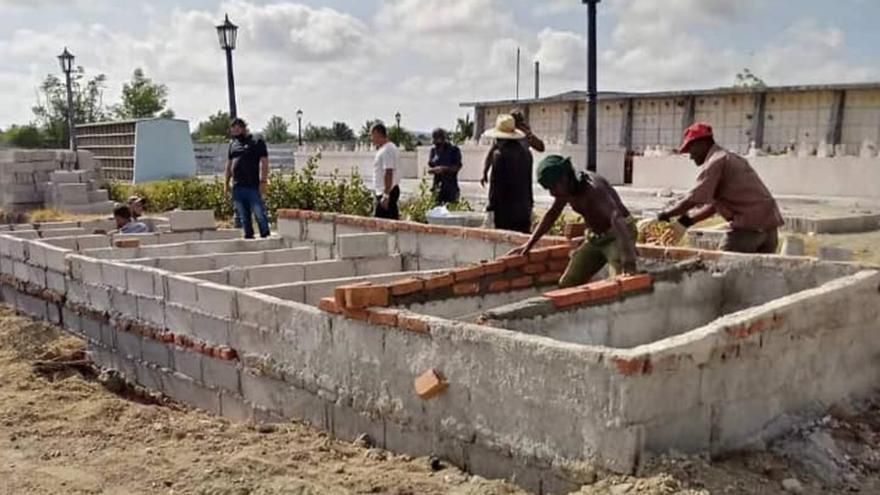The group, made up of Civil Rights Defenders, Cubalex, Article 19, Justicia 11J, Prisoners Defenders and ten other NGOs, detailed some of the systematic punishments in Cuban prisons.
One of them is being handcuffed with one’s arms raised, as documented by the Cubalex legal organization with a source in several of the prisoners themselves and announced on their social networks.
“This form of torture consists of handcuffing the inmate on one arm and the attaching the handcuff to a high place, so that the limb is suspended and in a position in which the person cannot sit down,” explains Cubalex, a position in which “the prisoner is left for prolonged periods of time that can even reach 24 hours or more.”
Another testimony collected is that of Félix Navarro about the Canaleta prison, in Ciego de Ávila, where he was imprisoned for several years after being arrested in the so-called Black Spring of 2003. There, the opponent had denounced, it was common to hang inmates a whole night and, in winter, every so often throw buckets of water at them.
In the maximum security prison of Agüica, Matanzas, where Navarro is now after being sentenced to nine years for the demonstrations on July 11, the government opponent José Díaz Silva, leader of the Opposition Movement for a New Republic; detained since July 3 March, he was also handcuffed to the ceiling for several hours, reports Cubalex.
Ángel Yunier Remón, who suffers from osteoarthritis as a result of the torture he was subjected to with handcuffs, told this NGO that when he suffered this punishment, “you feel pain, your hand cramps, you don’t feel it. It turns black, cold. You can’t even move your shoulder. It immobilizes you.”
The rapper Maykel Castillo Osorbo, in prison without trial since last year, has said that he was also handcuffed, “but in a different way.” In his case, “they made him put his hands and feet through the bars and stand in that position with his limbs handcuffed.” They could leave him like this for up to three days, “causing him a very strong pain in the torso and shoulders.”
The organizations gathered this Wednesday at a press conference celebrated that the United Nations Committee Against Torture (CAT), after reviewing the situation in Cuba between April 21 and 29 in Geneva (Switzerland) , has asked the regime for “precise information” on the matter.
Specifically, the UN demands that the Cuban State respond, no later than May 13, 2023, regarding “an independent inspection of places of detention, the situation of human rights defenders, journalists, activists and artists in the Island and the investigation and sanction of the events of July 11, 2021.”
For Darcy Borrero, a member of the Justice 11J group, which has followed up on the demonstrators arrested after the protests that day, it is “very valuable that this dialogue has been carried out” with the Committee against Torture, and that it has placed the “emphasis” precisely on the protests of that day, as well as on the appropriate sanction for the agents who subjected the demonstrators to punishment, arrests and interrogations.
Borrero also describes as key the attention of the UN to the case of the murder of Diubis Laurencio, in La Güinera, shot in the back by a policeman on July 12.
In its most recent report on the Island, and among other considerations, the CAT regrets that a national human rights institution has not yet been created in Cuba, that there is no independence of the judiciary, nor is the independent exercise of the legal profession guaranteed, nor are there guarantees so that military courts do not try civilians. On the Island, in short, the “fundamental safeguards against torture of all detained persons” are not guaranteed.
In his speech on May 11 in Geneva, and after reviewing the complaints and testimonies collected by different civil organizations, the vice president of the UN Committee against Torture, Sébastien Touzé, asserted that the Cuban State has taken measures “manifestly contrary to to the Convention against Torture.”
Touzé also said that the “high number of arrests,” especially after “the events of July 2021” offers “an alarming vision.”
The interventions of the Cuban Government before the sessions, on April 21 and 29, were of little use; according to a statement from the Ministry of Foreign Affairs, they presented “the broad and solid system of laws, rules, regulations and policies that guarantee in Cuba the integral protection of the person, in accordance with the provisions of the Convention,” as well as “the actions conceived and applied to prevent acts of torture, cruel, inhuman and degrading treatment from occurring in the national territory, frequent before 1959 and radically eliminated and prohibited by the Cuban Revolution.”
Before the beginning of this session of the Committee Against Torture, last April, the same group that presented testimonies from prisoners this Wednesday in Mexico warned of worrying issues in current Cuban laws and in those that are about to be approved.
Similarly, the Madrid-based NGO Prisoners Defenders also presented a report to the Committee in which it identified up to “15 patterns” of mistreatment and torture of prisoners on the island, including deprivation of medical care, forced labor outside the the criminal conviction, solitary confinement as punishment, physical assaults and deprivation of water or food, sleep, and of communication with lawyers and relatives. The conclusion of that document was forceful: the use of torture is systematic against the political prisoners of Cuba.
____________
COLLABORATE WITH OUR WORK: The 14ymedio team is committed to practicing serious journalism that reflects Cuba’s reality in all its depth. Thank you for joining us on this long journey. We invite you to continue supporting us by becoming a member of 14ymedio now. Together we can continue transforming journalism in Cuba.
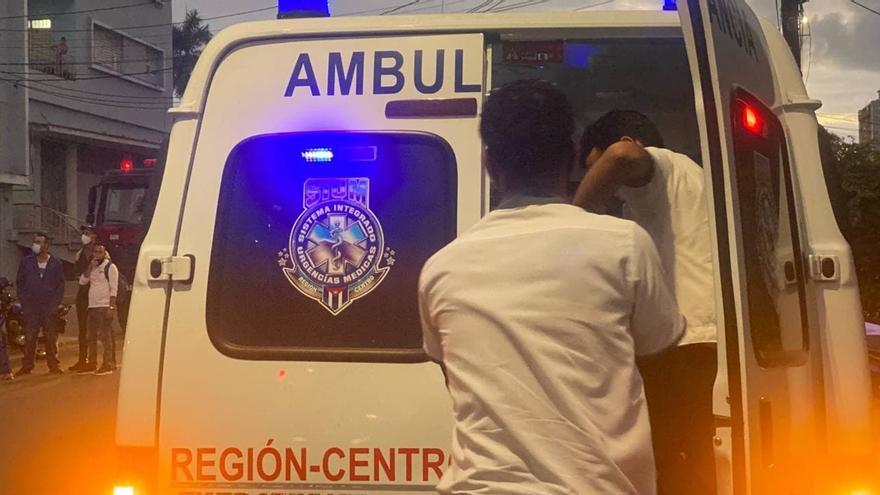
![]() 14ymedio, Havana, 17 May 2022 — The latest confirmed femicide on the Island, the eleventh so far in 2022, shows unusual cruelty. As denounced on Monday by the Red Femenina de Cuba [Cuban Women’s Network] the young Yusleidy Aguilera Fernández, 21 years old and with two small children, was viciously stabbed to death and had her breasts cut off. The information was confirmed by the feminist magazine Alas Tensas, which specified that the children are 2 and 5 years old.
14ymedio, Havana, 17 May 2022 — The latest confirmed femicide on the Island, the eleventh so far in 2022, shows unusual cruelty. As denounced on Monday by the Red Femenina de Cuba [Cuban Women’s Network] the young Yusleidy Aguilera Fernández, 21 years old and with two small children, was viciously stabbed to death and had her breasts cut off. The information was confirmed by the feminist magazine Alas Tensas, which specified that the children are 2 and 5 years old.
